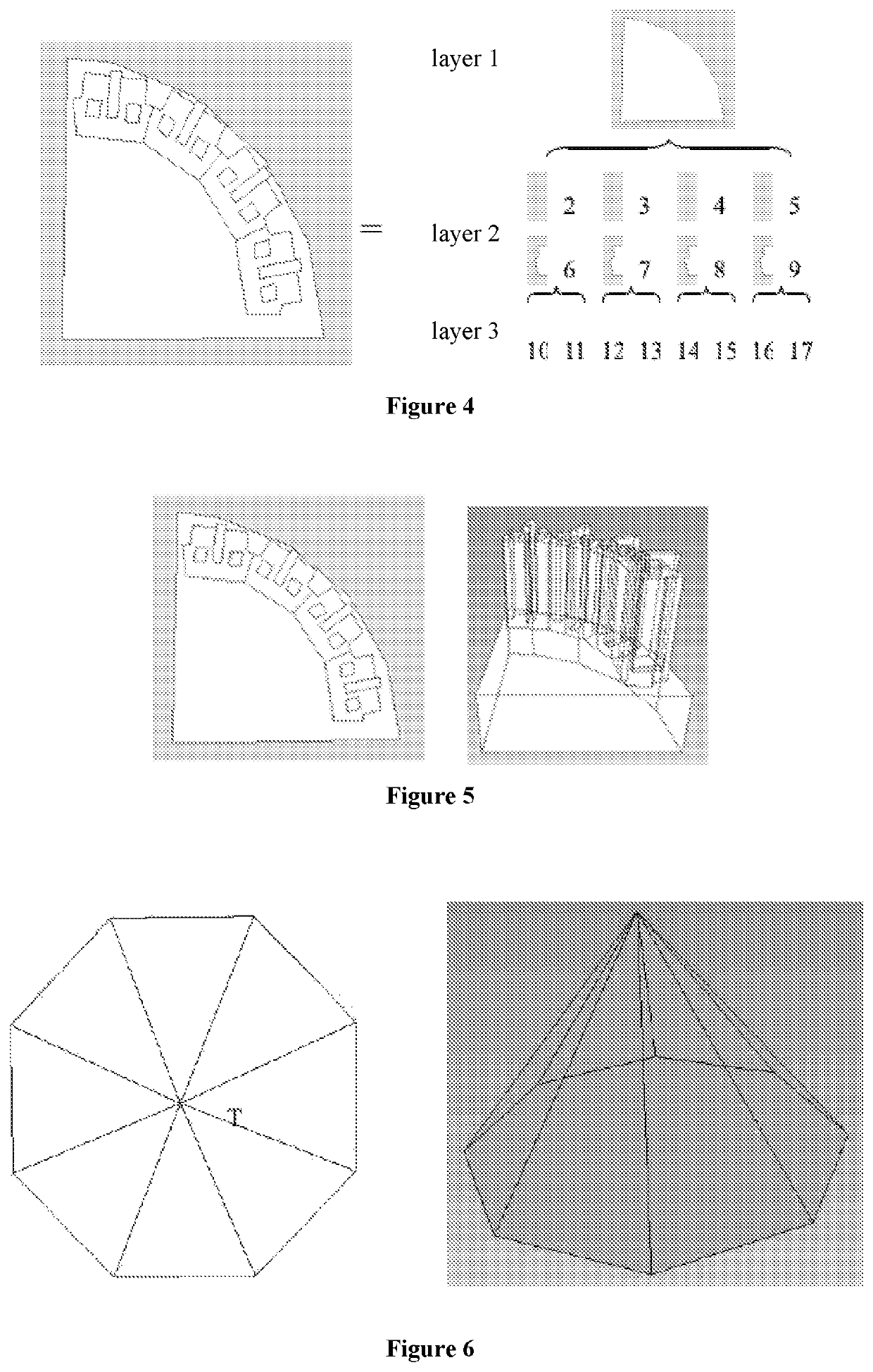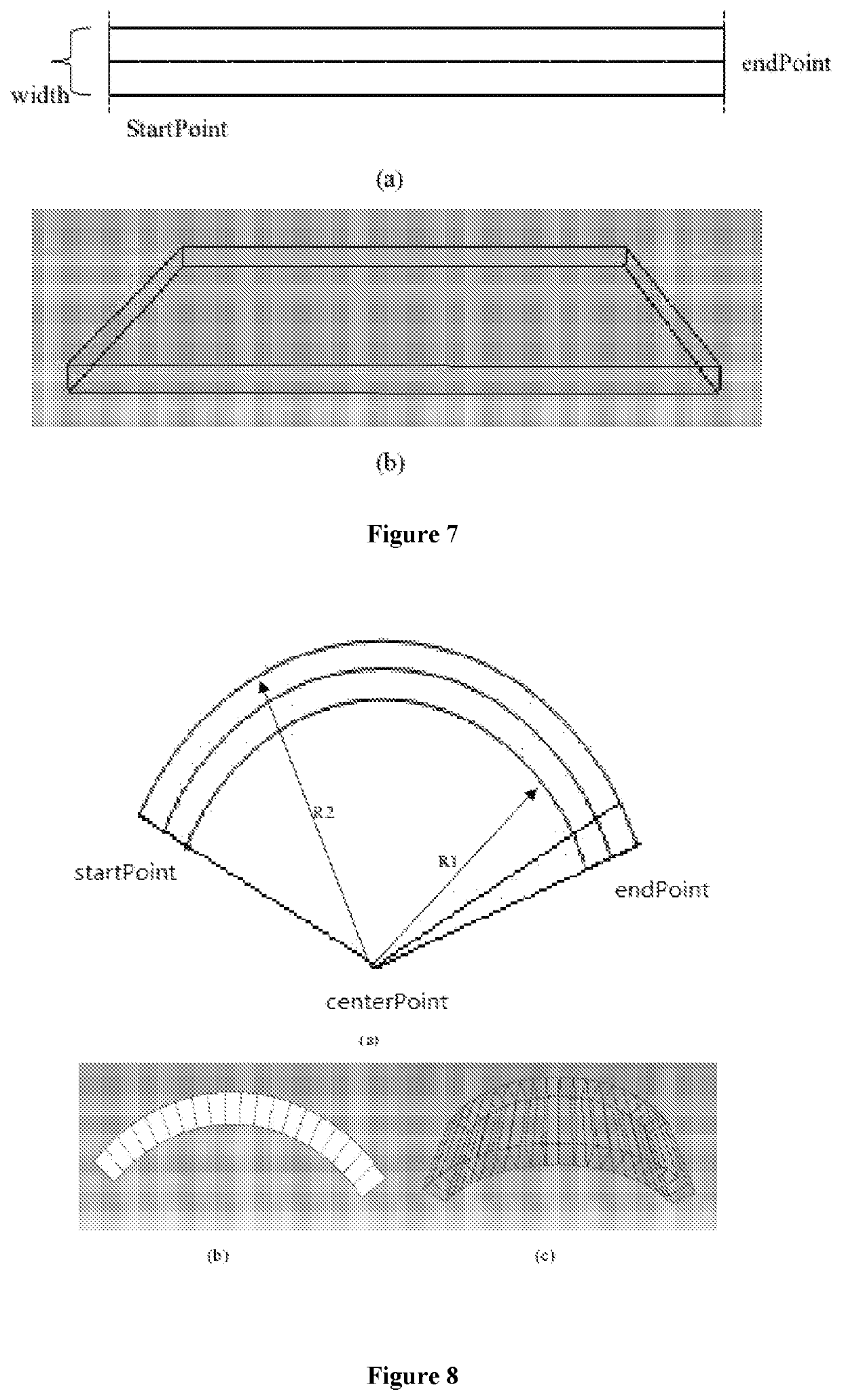Method for automatic modeling of complex buildings with high accuracy
a technology of complex buildings and automatic modeling, applied in the field of three-dimensional (3d) modeling, can solve the problems of loss of building information, poor accuracy of 3d models generated in this method, and methods provided by prior art that have poor accuracy and fail to present details of buildings, so as to improve the efficiency of modeling, reduce the number of determining time and the number of surfaces, and improve the effect of automation and rendering efficiency
- Summary
- Abstract
- Description
- Claims
- Application Information
AI Technical Summary
Benefits of technology
Problems solved by technology
Method used
Image
Examples
Embodiment Construction
[0052]In order to demonstrate the objective, technical solutions and advantages of the present invention more clearly, embodiments are described in detail hereinafter with reference to accompanying drawings. However, it is obvious for the skilled in the art that the embodiments and drawings should not be taken as any limit on the invention.
[0053]First of all, the technical terms appearing in the present invention are defined as follows so as to clarify the description of the present invention.
[0054]1. Simple Polygons
[0055]In mathematics, a polygon is a closed plane figure made of three or more positions in coordinate system named as vertexes and edges that links these vertexes sequentially. In geometry, edges of a polygon do not have any other common points but endpoints. Therefore, based on the definition above, all the vertexes of a polygon are on a single plane and the edges do not intersect with each other than at these vertexes. A polygon having no edge intersecting other edges...
PUM
 Login to View More
Login to View More Abstract
Description
Claims
Application Information
 Login to View More
Login to View More - R&D
- Intellectual Property
- Life Sciences
- Materials
- Tech Scout
- Unparalleled Data Quality
- Higher Quality Content
- 60% Fewer Hallucinations
Browse by: Latest US Patents, China's latest patents, Technical Efficacy Thesaurus, Application Domain, Technology Topic, Popular Technical Reports.
© 2025 PatSnap. All rights reserved.Legal|Privacy policy|Modern Slavery Act Transparency Statement|Sitemap|About US| Contact US: help@patsnap.com



